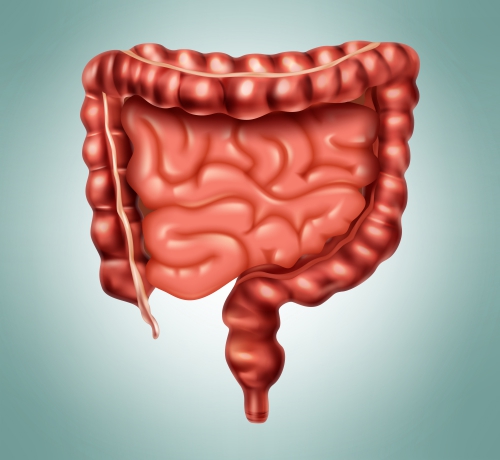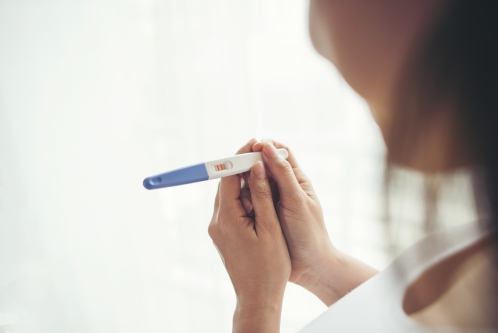What is intussusception?
Intussusception occurs when part of your intestine slides into an adjacent part of the intestine. This is often describes as telescoping of the intestines. Intussusception is a serious condition which lead to bowel obstruction. In addition, it may lead to bowel perforation, infection and death of the intestinal tissue as the blood supply is cut off. This condition may present with colicky abdominal pain, vomiting and a palpable mass amongst others.
Intussusception mainly affects children under the age of 3 but is more common in children aged between 5-10 months. In the United States, it is estimated that out of every 2000 live births, 1 child is affected by this condition. In addition, it is more common in males than in females.
What are the causes of intussusception?
Intussusception occurs in the small intestines. The small intestine is a long muscular tube where absorption of nutrients and minerals from food takes place. In this condition, part of your small intestine slides into an adjacent part of the intestine which causes intestinal obstruction. This telescoping may be caused by a polyp or tumour (also known as a lead point). When your intestine contracts its muscle in an attempt to move food along it, the lead point gets pulled inside the adjacent part of the intestine leading to intussusception. Another lead point may be a Meckel’s diverticulum which is a pouch in the intestinal wall.

What are the risk factors for intussusception?
There are several factors which may increase the risk of developing intussusception and these include:
- Age: Intussusception is a condition which mainly affects children under the age of 3 but is more common in children aged between 5-10 months.
- Family history: Having a parent or sibling affected by this condition in the past, increases the risk of developing intussusception.
- Prior history of intussusception: Once affected by intussusception, the risk of developing another one is higher than those who never developed it.
- Sex: Males are more at risk of developing this condition than females.
What are the signs and symptoms of intussusception?
The signs and symptoms of intussusception include:
- Sudden inconsolable loud crying: The first sign of intussusception in an infant is often a sudden inconsolable loud crying which is due to the abdominal pain associated with this condition. In addition, while they are crying, they may pull their knees towards their chest in an attempt to relieve the abdominal pain. However, in between attacks of abdominal pain, the child may look normal.
- Vomiting: Initially the vomit is non-bilious. However, as intestinal obstruction occurs it becomes bilious. Bilious vomiting is when the vomit has a greenish or brown colour due to the presence of bile in it.
- Abdominal pain: The pain associated with intussusception is colicky, intermittent and severe.
- Lethargy
- Bloody diarrhoea: The passage of stool that look like currant jelly. This is because there is presence of mucus and blood in the stool.
- Abdominal mass: The mass is often described as sausage-shaped and is located I the right upper abdomen.
- Fever

Making a diagnosis
To make a diagnosis, your doctor will first take a detailed history from you to know more about the symptoms of your child. After the history taking, your doctor will perform a thorough physical examination to look for signs of intussusception. In order to confirm the diagnosis, your doctor may order some tests and these include:
- Plain abdominal radiography: This test can show the presence of intussusception in only 60% of cases. The earliest findings on an abdominal x-ray may be the absence of gas or air in the right lower and upper abdomen. It is also used to rule out intestinal perforation. In addition, after intestinal obstruction occurs, characteristic findings include dilatation and presence of air-fluid levels in the small bowel.
- Ultrasonography: This test uses sound waves to produce images of your bowel. It does not involve ionising radiation which is why it is preferred in children. In addition, it allows your doctor to determine whether the blood supply to the affected part of the intestine is cut off or not. A bull’s-eye is often seen on the image which points towards intussusception.
- Computed Tomography (CT) scan: CT scan of the abdomen may be used in the diagnosis of intussusception. However, due to ionising radiation, its use is avoided.
- Barium or air enema: During this procedure your doctor inserts air or liquid barium into the colon via the anus to provide a detailed image of the intestines. In addition, this procedure is diagnostic and also therapeutic. That is, your doctor may push air or the liquid barium in an attempt to return the intestine to its original place. This is successful in 90% of cases. The use of barium is contraindicated in cases where there is bowel perforation.

What are the treatments of intussusception?
The treatment options of intussusception include:
- Non-operative reduction: This is the use of barium or air enema to return the intestines back into place. This procedure cannot be performed if there is presence of infection or inflammation around your bowels (peritonitis) or bowel perforation. This procedure is the treatment of choice in many hospitals as it is less invasive and carries less risk than surgery. When this procedure is successful, the infant falls asleep immediately and the intestinal obstruction is relieved which will allow the infant to resume a normal diet.
- Surgical reduction: Surgical reduction is indicated when non-operative reduction was unsuccessful or if bowel perforation is present. An incision is made on the infant’s abdomen to reach the intestines. Then the surgeon will “milk” the intussusception to put the bowels in its original state. If the surgical procedure is successful, an appendectomy (removal of the appendix) is done if blood supply to the appendix was compromised. The risk of recurrence of the intussusception after surgical reduction is less than 5%. Furthermore, this surgical procedure can be done by laparoscopy- this involves making a few small incision on the abdomen to pass some tools and a tube containing a camera at its end. Laparoscopy is associated with a decreased length of stay, faster recovery times, lower use of pain killer and decreased time to resume a normal diet.

What are the complications of intussusception?
The following complications may ensue if intussusception is left untreated or after surgical reduction:
- Bowel perforation
- Peritonitis
- Wound infection
- Adhesions- when the walls of the intestines stick together- causing intestinal obstruction.
- Sepsis- when the infection spread to your bloodstream.
- Intestinal haemorrhage
- Recurrence
Prognosis
Diagnosing and treating intussusception early result in an excellent prognosis. Otherwise, several complications and death may occur. Recurrences after non-operative reduction is usually less than 15 %. With early diagnosis and the appropriate treatment, the mortality rate is less than 1 %. However, if intussusception is left untreated, death occurs in 2-5 days.
Source:
J. Alastair, I. and Simon, M., 2016. Davidson's Essentials of Medicine. 2nd ed. London: ELSEVIER.
Parveen, K. and Michael, C., 2017. Kumar & Clarks Clinical Medicine. 9th ed. The Netherlands: ELSEVIER.
Sato, T., 2020. Intussusception In Children.
Chahine, A., 2020. Intussusception: Practice Essentials, Background, Etiology And Pathophysiology.
Chahine, A., 2020. Intussusception Workup: Approach Considerations, Radiographs, Ultrasonography And CT Scanning.
Chahine, A., 2020. Intussusception Treatment & Management: Approach Considerations, Nonoperative Reduction, Surgical Reduction.









